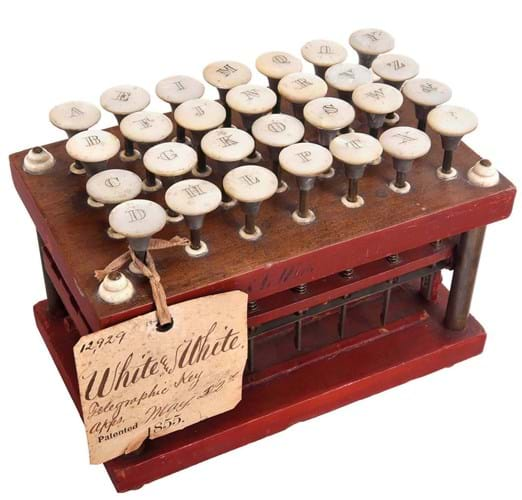Instead of the dots and dashes of Samuel Morse’s code, words could be typed using a keypad containing the letters of the alphabet plus an ampersand and a question mark.
The original patent tag, dated May 22, 1855, reads White & White Telegraphic Key Apps while accompanying literature references the patent and the inventors Leroy S White of Chicopee, Massachusetts, and Lewis White of Hartford, Connecticut.
White & White’s device appears not to have caught on, but this finely-made mother-of-pearl, mahogany and brass model was the subject of huge competition in Cologne on March 25. Estimated at €3000-5000, it took €50,000 (£44,000).
Developed in the 1830s and 1840s in the UK and the US, the telegraph revolutionised long-distance communication.
The science was relatively simple. It worked by transmitting simple electrical signals over a wire laid between stations – but the genius was to assign a set of dots and dashes to each letter of the English alphabet that allowed for the transmission of complex messages.
This model was one of many improvements and revisions made to the core technology in the third quarter of the 18th century.
Patented in 1855, this was the year before the founding of the Western Union Telegraphy Company, six years before the first transcontinental telegraph line and more than a decade before the first permanent cable was laid across the Atlantic Ocean.















